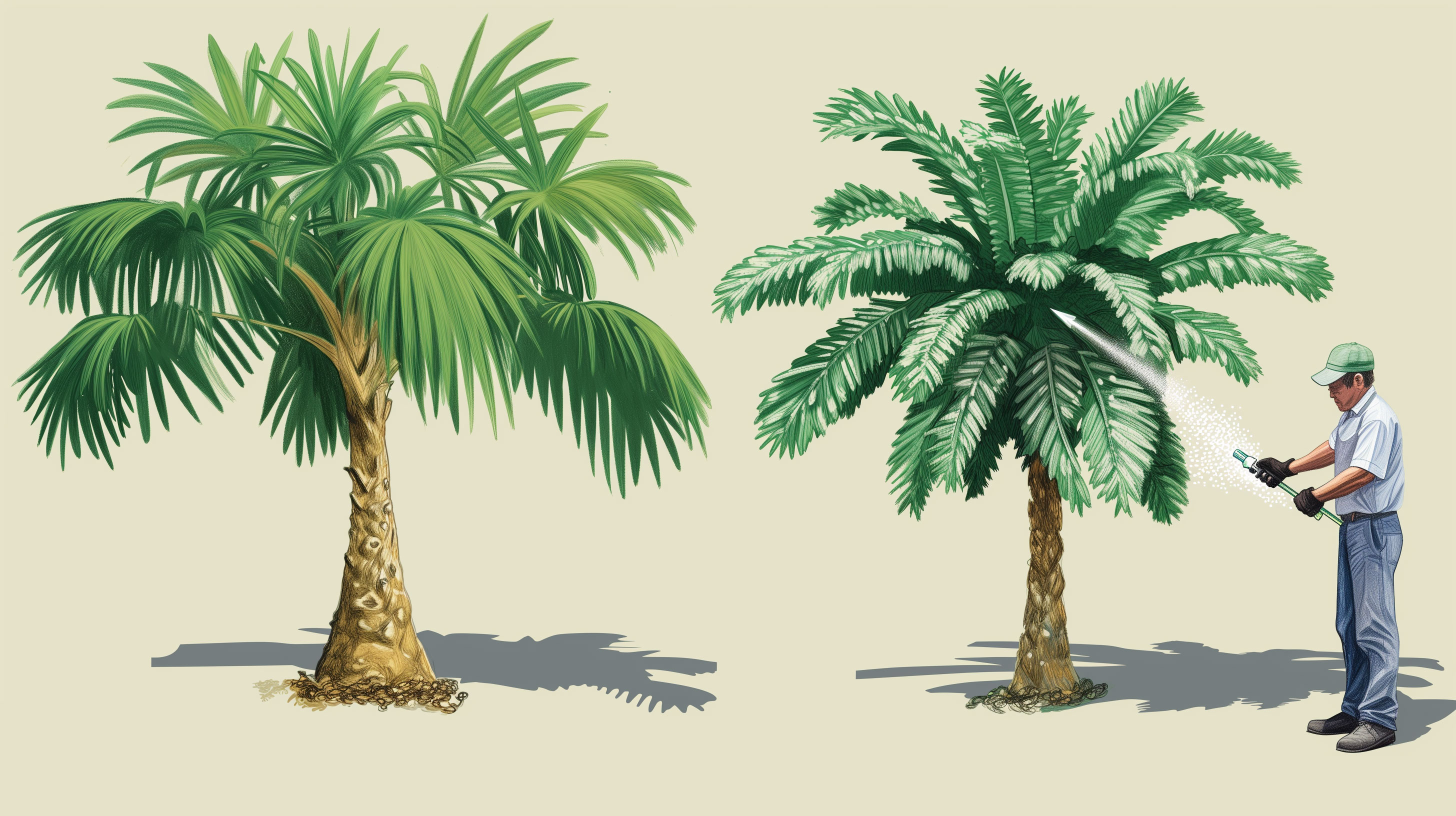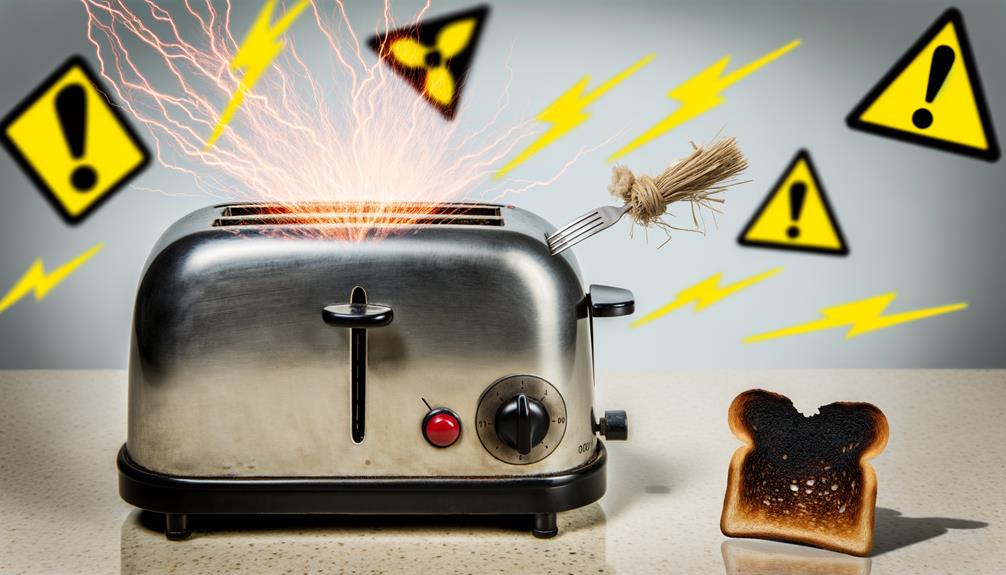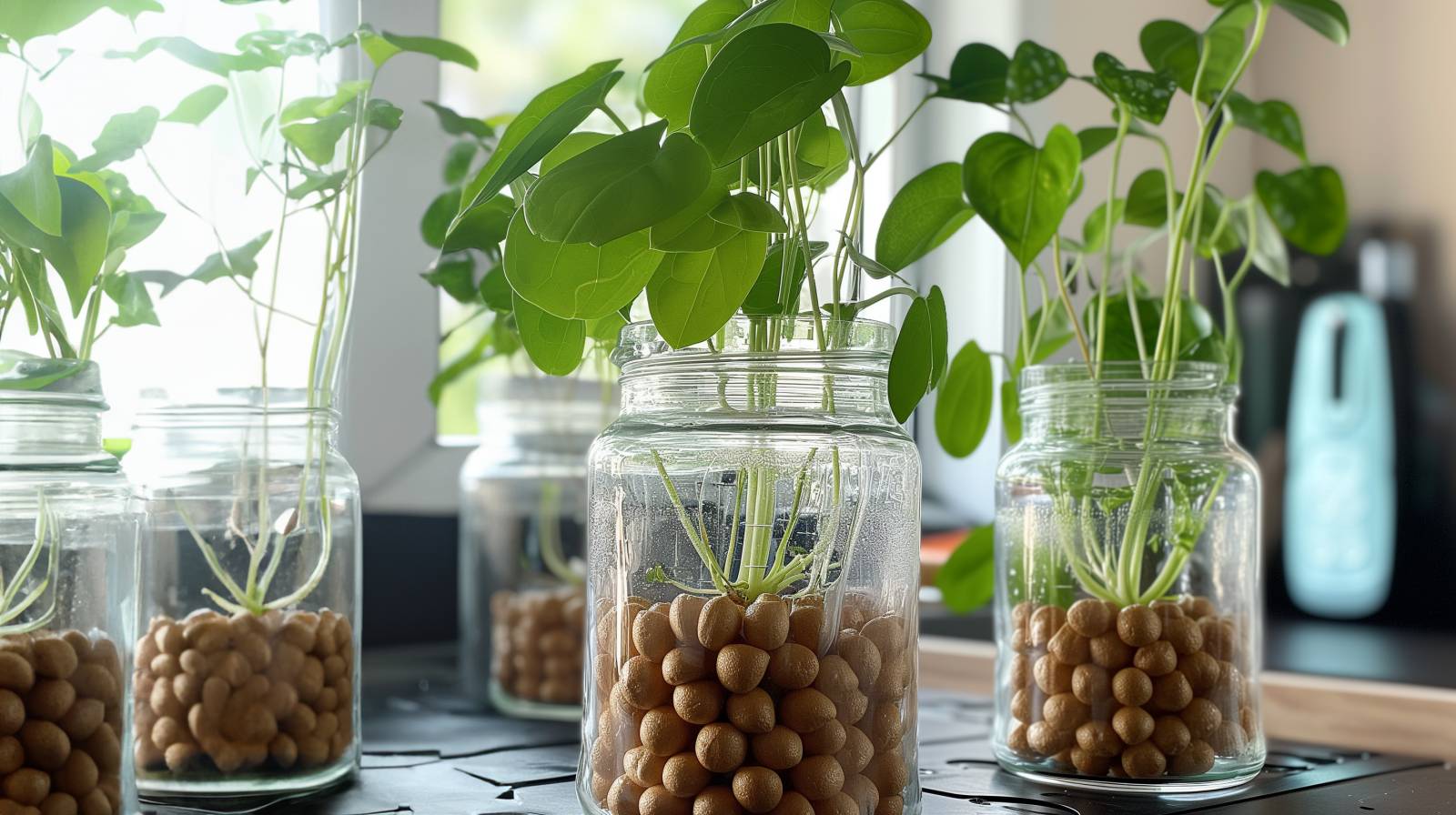Are you dealing with a white fungus on your palm tree and wondering what’s causing it? It’s likely due to two main pests, namely the Spiraling Whitefly and Cycad Scale.
Table of Contents
ToggleThis is a common issue many palm tree enthusiasts face. But fear not, it’s a challenge that can be overcome.
There are various ways to fight this fungal foe, including getting rid of the infected leaves, keeping an eye out for new infections, ensuring the leaves stay dry, and even using DIY fungicides.
So how do you choose the most effective method for your specific case? Let’s break this down.
Identifying White Fungus on Palms
Spotting white fungus on your palm trees can be as simple as noticing a powdery, sugar-like substance on the leaves and stems. It’s a common issue that can cause leaves to curl and distort, hinting at the presence of this unwelcome guest. Although it mightn’t cause significant damage, you’ll notice an unsightly white, chalk-like residue covering the leaves.
Getting rid of white fungus can be a challenge, especially since it reproduces quickly and can be resistant to many commercial fungicides. However, the first step to dealing with it’s to understand it. While the fungus may not affect all species or positions of your palm trees, it targets certain plants consistently.
Is it possible to keep your palm trees safe and get rid of the white menace? Yes, it is, but you need to be able to identify it. Keep an eye out for that powdery white substance, curled leaves, or stunted growth. Understanding the enemy is the first step in winning the battle against white fungus on your precious palm trees.
Causes of Powdery Mildew
Now that you’re familiar with how to identify white fungus on your palms, let’s explore what causes this powdery menace.
The white stuff you see on your palms is called powdery mildew, a common plant disease caused by different species of fungi.
There are several causes of powdery mildew:
- It thrives in warm, humid conditions, making your tropical palm trees an attractive target.
- The fungus can overwinter on plant buds, stems, or fallen leaves. Come springtime, 60-degree temperatures activate the fungi, leading to spore production during damp nights.
- Wind then spreads the spores to nearby trees and plants, causing the cycle to repeat.
These conditions contribute to its development:
- Excess moisture: Overwatering your palms may lead to an increase in disease.
- Poor air circulation: Dense clusters of palms may foster fungus growth.
- High humidity: This increases the chance of infection.
If infected, your palms may experience stunted growth, distorted leaves, and irregular white spots—resembling a powdered sugar coating.
Understanding these causes can help you prevent and treat powdery mildew.
Effective Fungus Treatment Methods
Armed with the knowledge of what causes powdery mildew, let’s dive into effective treatment methods to keep your palms healthy and fungus-free.
The first step is prevention. Regular monitoring and maintenance of good plant health is key. But if symptoms appear, don’t fret. You can use a fungicide or horticultural oil, applying treatment every week or two until temperatures hit 80 degrees and nighttime humidity drops.
In the battle against white fungus, neem oil proves a strong ally. This natural product, along with insecticidal soap, can be used as initial treatments for scales on palm trees. Remember, multiple applications may be required to completely eliminate scales.
Here’s a handy table summarizing effective fungus treatment methods:
| Method | Description |
|---|---|
| Fungicide or Horticultural Oil | Apply weekly until temperatures reach 80 degrees |
| DIY Treatment | Use a mixture of vinegar, baking soda, and dish soap |
| Pruning | Increase air circulation and sunlight exposure |
| Neem Oil and Insecticidal Soap | Use as initial treatments for scales |
Natural Remedies for Fungus Control
While fungicides and horticultural oils can be effective, you shouldn’t overlook the power of natural remedies in controlling fungus on your palm trees. These organic solutions are both environmentally friendly and can often be just as effective.
Consider these natural remedies for fungus control:
- Neem oil is a natural pesticide that disrupts the life cycle of pests, not just killing them but also preventing them from feeding and reproducing.
- Insecticidal soap is a safe, non-toxic, and effective way to control pests and diseases.
- Milk solution can help inhibit the growth of fungus.
- Baking soda is a common household item isn’t only safe but can also be effective in managing fungus. To use, simply mix one tablespoon of baking soda with a gallon of water and spray the solution on the affected areas of your palm tree.
Preventive Measures for Future Outbreaks

To keep those pesky fungi at bay in the future, it’s vital to regularly prune and thin your palm trees, increasing air circulation and reducing humidity – conditions that fungus thrives in. This is one of the key preventive measures for future outbreaks.
Avoid overhead watering and instead water at the base of your palms. Keeping the leaves dry discourages mold growth. During humid seasons or when you see the first signs of fungus, consider using preventive fungicidal sprays. This can stop potential outbreaks in their tracks.
When you’re replanting, choose resistant palm tree species or cultivars. They’re less susceptible to white fungus and other diseases. Regularly monitor your plant’s health, including checking for root rot, and maintain proper watering techniques. This helps to prevent excess moisture and keeps your plants strong against future attacks.
| Preventive Measures | How It Helps | When to Implement |
|---|---|---|
| Pruning | Increases air circulation | Regularly |
| Base Watering | Keeps leaves dry | Always |
| Fungicidal Sprays | Stops early signs of fungus | Humid seasons |
| Resistant Species | Less susceptible to disease | Replanting |








